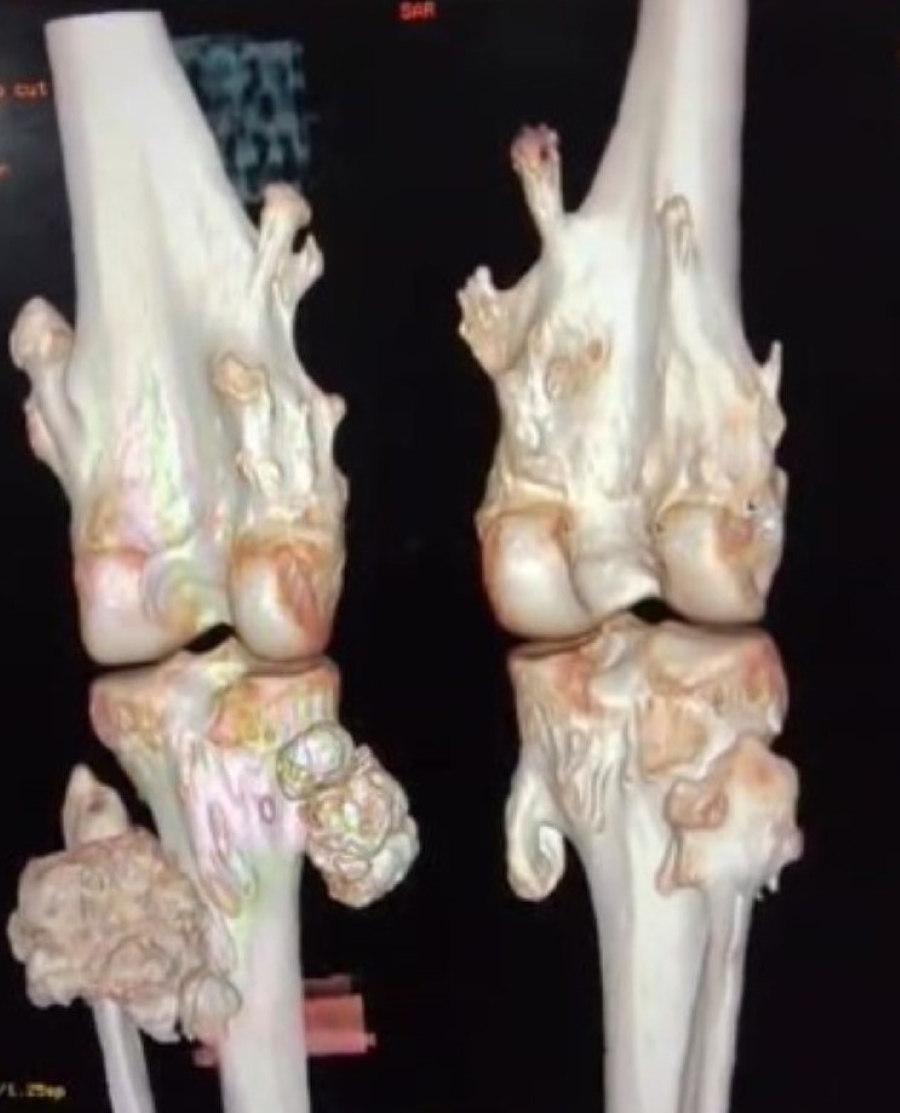Malignant transformation of multiple exostosis: a case report
Keywords:
Osteochondroma, Chondrosarcoma, Bone tumourAbstract
Introduction: Osteochondroma is a benign tumor of bone. Malignant transformation of Osteochondroma is the most devastating complication one can encounter. Osteochondroma can transform into any malignancy like Osteosarcoma, Chondrosarcoma and Ewing sarcoma. Malignant transformation is more common in patients with multiple exostosis. Recognition of this malignant transformation is needed to predict the patient's outcome.
Case presentation: A 26-year-old male patient came with complaints of a mass in the left knee region for the past 7 years. X-ray of the knee showed multiple pedunculated exostosis on either side of the distal end of the femur, tibia and fibula. Histopathological examination revealed a bony lesion with a cartilaginous cap of increased thickness and cellularity. The cartilaginous cap possesses plump chondrocytes showing binucleation-forming nodules with mild atypia. The cartilaginous cap undergoes endochondral ossification, suggesting the possibility of a secondary peripheral atypical cartilaginous tumor from osteochondroma of the tibia.
Discussion: Chondrosarcoma is a heterogeneous type of primary bone cartilaginous malignancy with variable clinical outcomes. Malignant transformation of osteochondroma in the appendicular skeleton was named atypical cartilaginous tumor; in the axial skeleton, it is named Grade 1 Chondrosarcoma.
Conclusion: Differentiation between osteochondroma and its malignant transformation can be possible if made in a multidisciplinary setting such as clinical history, radiological findings along with histology to confirm the diagnosis.

Additional Files
Published
How to Cite
License
Copyright (c) 2024 Birundha B, Senthil Kumaran, Jeya Shambavi

This work is licensed under a Creative Commons Attribution-NonCommercial 4.0 International License.
